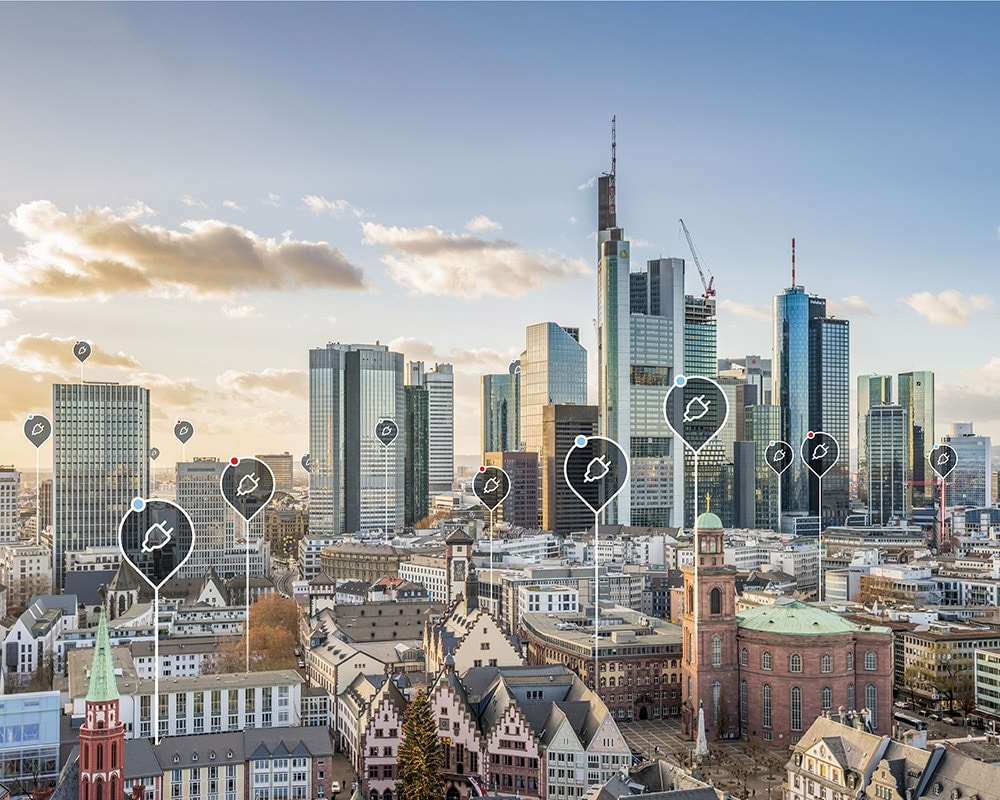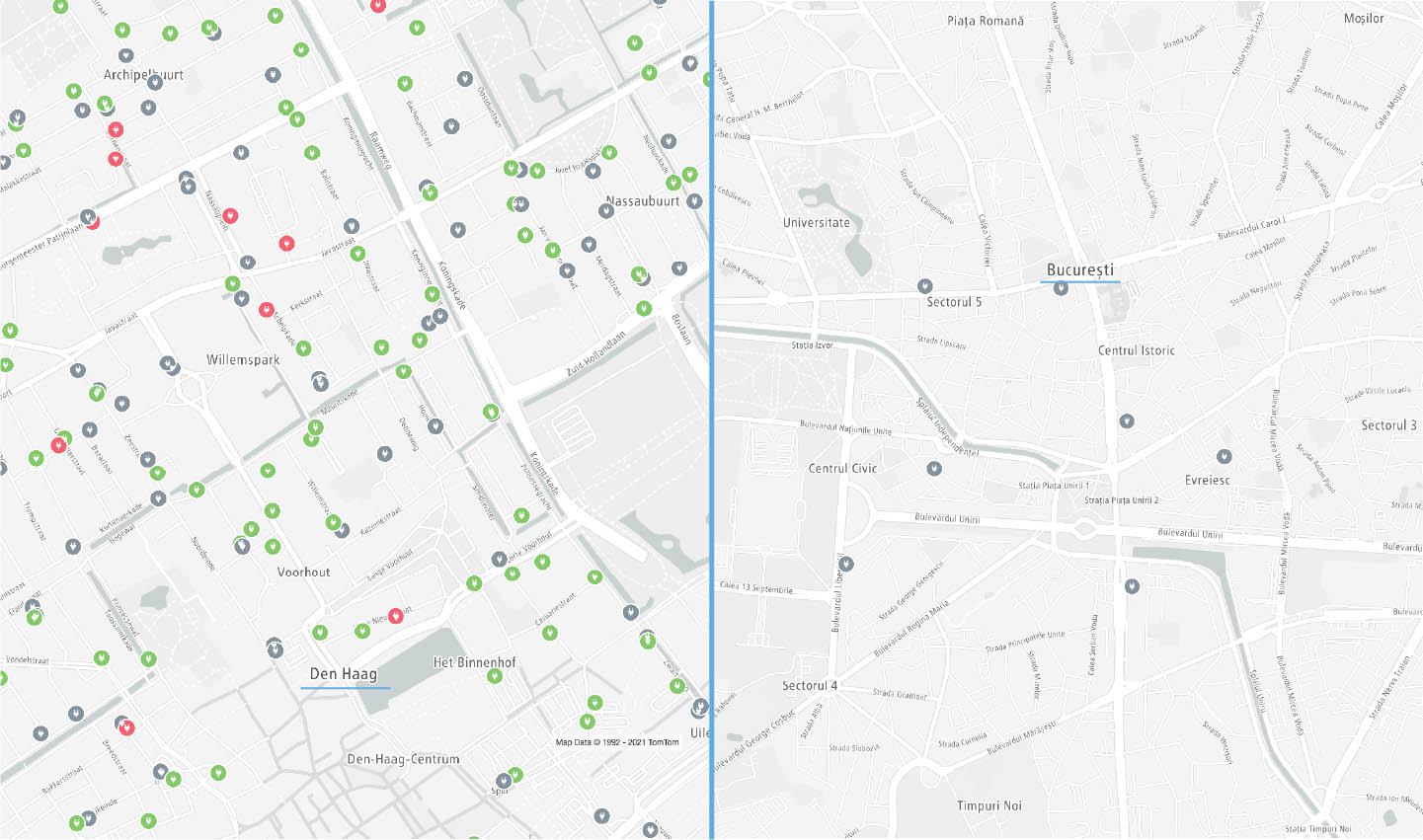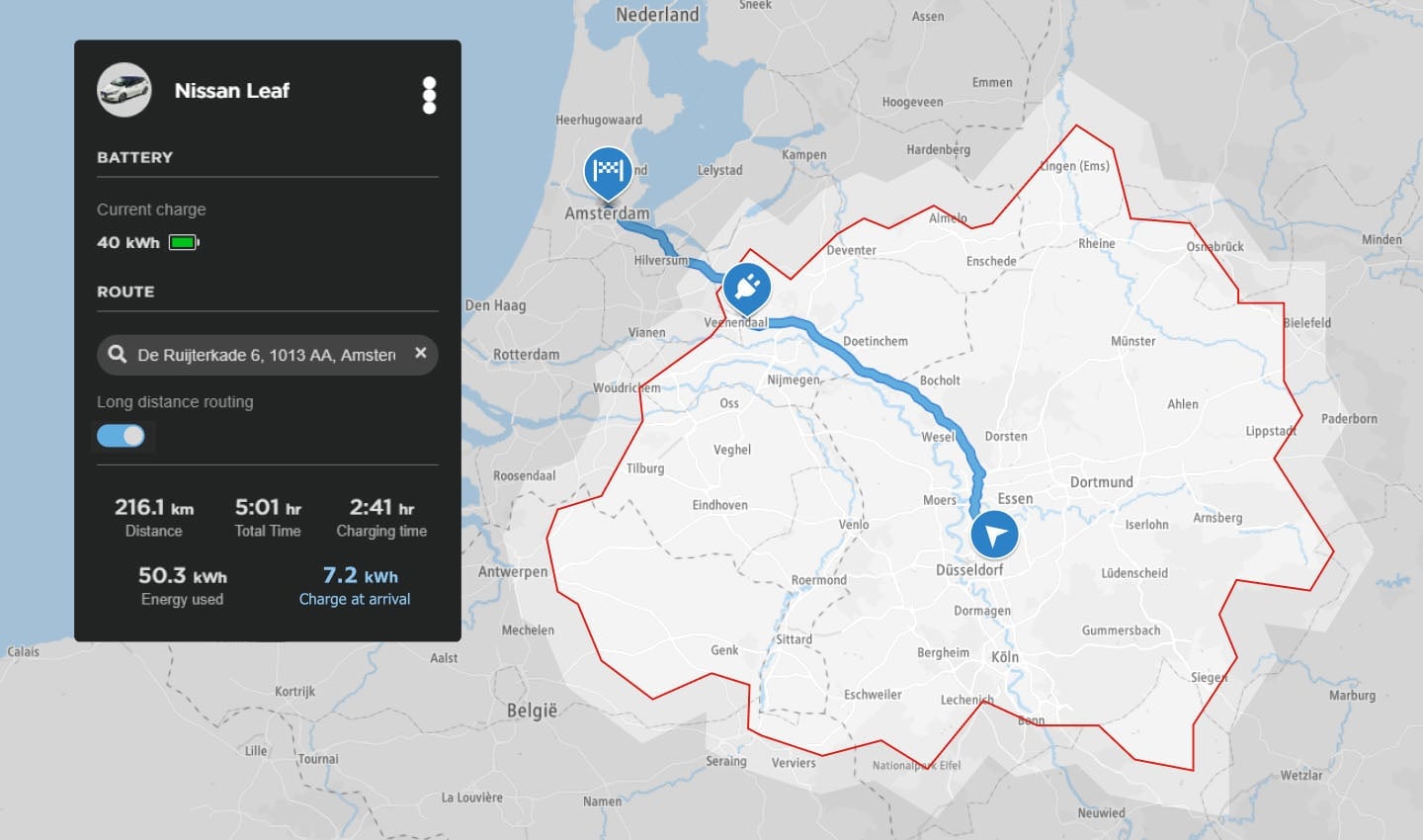
With interest in electric vehicles (EVs) soaring, we’re gradually moving towards a cleaner and more sustainable future. But how do we make EV adoption easy and trustworthy for everyone?
Do you know which country has the largest percentage of electric vehicles? It's Norway! 61.5% of all new cars are new plug-in electric vehicles and only 11.1% of newly registered vehicles use internal combustion engines. What about the highest density of public charging stations? It’s the Netherlands, with over 3.5 charging points per 1,000 citizens. No wonder these countries take the top two spots on Leaseplan’s EV Readiness Index for Europe.
People from other countries are green with envy (pun intended), including comedian Will Ferrell, who pledged to “out-EV” Norway in a recent Super Bowl ad. But despite plug-in sales growing by 43% against a global light vehicle decline of 14%, this growth is largely concentrated in specific regions. In Japan, plug-in sales actually declined. And electric’s total share of the light vehicle market is still only about 4%.
The science behind EV’s environmental benefit is irrefutable though. Road transport pollution is responsible for over 20% of all CO2 emissions caused by humans. Electric vehicles reduce harmful vehicle emissions by up to 30% when operating with electricity generated from fossil fuels, and this figure grows beyond 70% when using renewable energy sources.
With such compelling reasons to go electric, why then are so many consumers reluctant to make the switch? Much of it comes down to one big barrier: EV range anxiety.
 Charging infrastructure varies greatly, e.g. between The Netherlands (left) and Romania (right).
Charging infrastructure varies greatly, e.g. between The Netherlands (left) and Romania (right).What is EV range anxiety?
EV range anxiety is the fear of running out of power on a journey and not being able to find a changing point. It’s a major stumbling block to greater EV adoption – and it has more to do with psychology than the actual range of EVs or the availability of charging points. The range of EVs has increased by roughly 15% on average in the last years and the infrastructure for physical charging points is constantly expanding.
Range anxiety helps explain why, despite the regulatory “push” from governments and technology improvements from manufacturers, most vehicles are still sold with a combustion engine. We’re still waiting to see the mass groundswell of adoption that the industry needs.
Charging up for an EV revolution
Despite economic uncertainty, EV sales have kept increasing. This is good news, as the benefits of a sustainable and cleaner way of moving will be shared by everyone, not only by early adopters or even just EV drivers, but for all citizens of the world.
This is one of the reasons why governments are incentivizing EV adoption, such as US president Biden’s proposal for $174 billion in EV incentives, and the UK’s proposed ban on new diesel and petrol cars from 2030. Similarly, we see OEMs announcing the phasing out of combustion-engine vehicles by 2035, 2030 or even as early as 2025.
However, to make sure this transition is a success, we need to ensure the experience is great for all users, not just early adopters. This is particularly important for existing vehicle manufacturers, as a study from JD Power suggests that dissatisfied vehicle owners will be nearly three times as likely to not repurchase the same brand. The same study also indicates that, to ensure a good experience, the driver needs reliable range prediction, plus good support for charging stations.
A closer look at EV range
Just how far can an EV go on a single charge? The average EV range is about 200 miles or 320 km, which means most day-to-day drives are well within an EV’s range, whether it’s a short commute, trip to the shops or seeing friends and relatives. For most people, journeys beyond an EV’s range are only made once or twice a year – on annual holidays or seasonal trips around the new year.
But widespread charging station networks are still essential, not only because of the expected growth in EV usage, but also because of the psychological value. Ubiquitous access helps drive EV adoption. The Netherlands, one of the best places in Europe to drive an EV, has recognized this. It's a relatively small country with many destinations nearby, yet the government is stimulating the infrastructure network and installing numerous EV charging points. It also helps EV owners directly by installing charging points close to an EV owners’ home, upon request, if there’s not one already nearby.
 Access to charging stations provides peace of mind and therefore plays a huge role in EV adoption.
Access to charging stations provides peace of mind and therefore plays a huge role in EV adoption.Elevation, weather, traffic and, most of all, driving speed play a role in an EV’s achievable range on a single charge. When planning a route, it’s vital to know the driving conditions on the day and the style of the driver behind the wheel. Having a heavy accelerator foot will have a large effect on an EV’s effective range.
Using this data, technology can help provide accurate range calculations for more predictable (and less anxiety-inducing) journeys. Knowing the information in advance is vital to strategic and safe EV route planning: being able to skip a charging stop could mean shaving 30 minutes off your ETA. Providing accurate range information is therefore essential to increase trust in EV adoption.
Discover how you can power precise range calculations and estimated times of arrival (ETAs) with TomTom EV Routing and Range.
Beyond electric charging points and range capacity
At TomTom, we strive to provide peace of mind to drivers. That includes taking the psychological obstacle of range anxiety away from EV driving. We do this by providing the best way to reach any destination, within or beyond a vehicle’s range. That includes long-distance EV routing that shows drivers where and when to charge on long journeys, as well as how long the stop will take. We also help drivers choose the best time and place for charging, based on availability, charging speed and user preferences.
Having in-dash navigation systems with connected services technology provides the best user experience. It tells drivers if their favorite destinations can be reached without having to recharge and shows the charging options available to them – based on compatibility with their vehicles and real-time availability of charging points. TomTom’s coverage for EV charging has recently grown to nearly 450,000 charging points in 90 countries, helping OEMs provide the coverage they need for their drivers.
The TomTom EV Service makes it easy for drivers to find available, compatible charging stations. For more information, visit our product page.
 An EV can better anticipate and optimize its energy management with knowledge of the road ahead.
An EV can better anticipate and optimize its energy management with knowledge of the road ahead.Looking down the road ahead
Drivers feel reassured when they know what is coming up. With clear route planning, visibility of charging stations and available charging points, drivers are reassured of a smooth journey. This removes much of the doubt and psychological barriers around driving an EV.
Real-time maps showing the key attributes of the road ahead, including ADAS features like speed limits, curves and gradient, topped off with live updates about traffic jams, diversions and weather. It all adds to the reassurance that the car can handle the range. If push comes to shove (and we hope you’ll never need to shove) then TomTom technologies can also plan contingencies to ensure you’ll never end up stranded on the side of a road.
If reassurance is needed to boost the EV car market’s fortunes, TomTom can provide the data and information drivers need. Rest assured, the electric vehicle revolution is well under way. We just need to ensure both the technology and infrastructure are ready for all types of users for a greener, cleaner future.
People also read
)
A better navigation experience: Designed for drivers, trusted by carmakers
)
The future of mobility is connected
)
A safer, cleaner and congestion-free world, one update at a time
* Required field. By submitting your contact details to TomTom, you agree that we can contact you about marketing offers, newsletters, or to invite you to webinars and events. We could further personalize the content that you receive via cookies. You can unsubscribe at any time by the link included in our emails. Review our privacy policy. You can also browse our newsletter archive here.
)